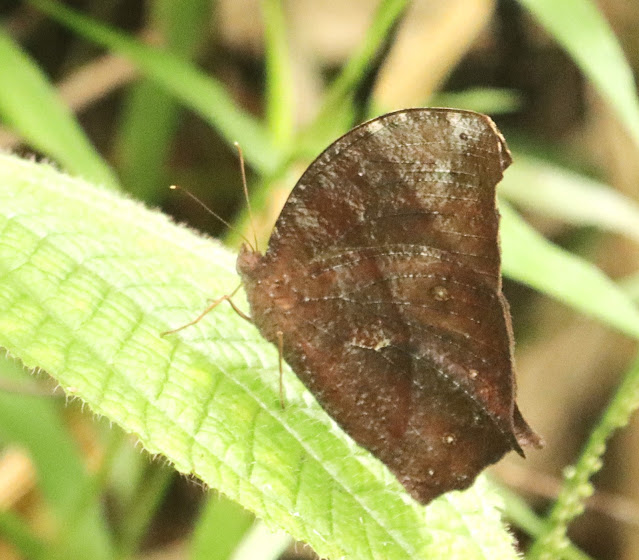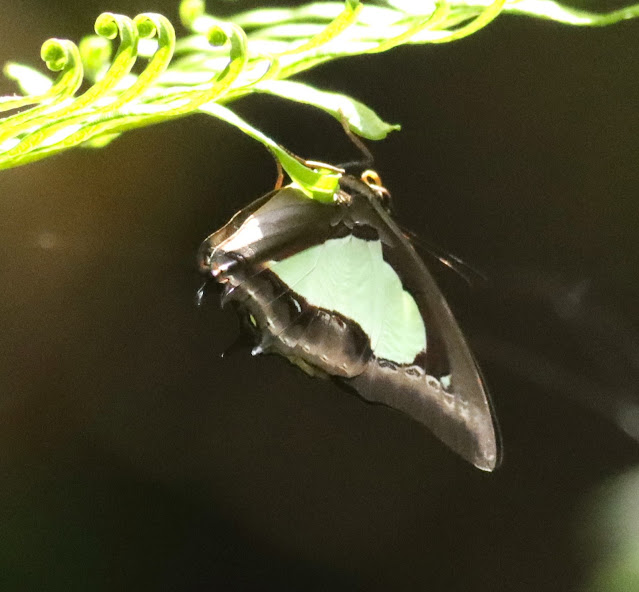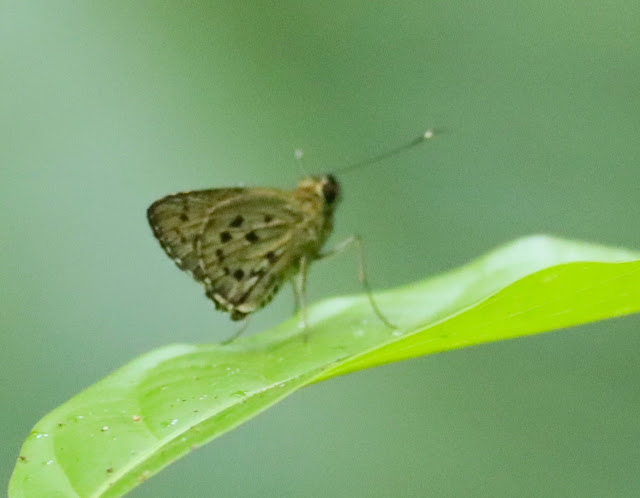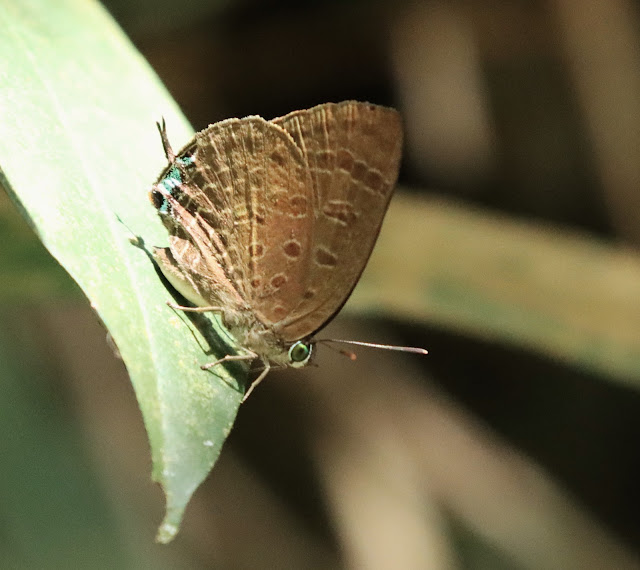The month of July 2023 will now be officially considered my most exciting month in my entire butterfly spotting adventures. Not only did I saw many new butterflies but those very rare ones have also appeared before my eyes. Together with the trip to Fraser Hill I have 'collected' at least 15 lifers within this month. I shall include the photos of the Fraser's Hill trip in the next post. Meanwhile here are some of the other amazing butterflies which I have seen in July 2023.
Great Mormon (Papilio memnon agenor)
This time the four of us saw two of them which stayed nearby to each other. This one looks slightly different than the top one.
Great Mormon (Papilio memnon agenor)
Common Yeoman
(Cirrochroa tyche rotundata)
Common Yeoman (Cirrochroa tyche rotundata)
Its colour almost blending well with the road.
This is an Intricate Jester
(Symbrenthia hypatia chersonesia)
Perak Lascar
(Pantoporia paraka paraka)
Perak Lascar may appear slightly smaller than a Malayan Lascar (Lasippa tiga siaka)
To compare between a Perak Lascar (Pantoporia paraka paraka) - above and a Malayan Lascar (Lasippa tiga siaka), I would look at the above three aspects. (1) in a Perak Lascar usually there is just a dent/groove but in a Malayan Lascar there is usually a protrusion. (2) in a Perak Lascar usually there are two lines but in a Malayan Lascar just one broad yellow line. (3) In Malayan Lascar the protrusion is like a teeth where else in a Perak Lascar is not clear like the above.
Dark Evening Brown (Male)
(Melanitis phedima abdullae)
Dark Evening Brown (Female)
(Melanitis phedima abdullae)
Arhopala kurzi
Apparently there are no common names for this Oakblue yet !!
Autumn Leaf
(Doleschallia bisaltide continentalis)
Here are the kings of Lepidoptera.
Palm King (Amathusia phidippus phidippus)
Palm King (Amathusia binghami)
The above is from a different Ssp.
Blue Catseye
(Coelites epiminthia epiminthia)
The above is a creature of the dark trails. Hardly comes out in the open.
According to people who are familiar with Allotinus species, this one could be a Broad-branded Darkwing (Allotinus leogoron).
A couple of Rounded Darkwings (Allotinus corbeti)
Common Bluejohn (Deramas livens livens) ??
Brownwings are exciting butterflies but this time not many were seen.
Extended Brownwing (Miletus gallus gallus)
....and this is the best way we identify a Miletus - i.e from the dorsal views.
Extended Brownwing (Miletus gallus gallus)
Extended Brownwing (Miletus gallus gallus) discussing some private matters with some ants friends.
Extended Brownwing (Miletus gallus gallus)
I love the shape of its eyes - like some alien being.
Royal Assyrian (Terinos terpander robertsia)
It came out just after the rain stops.
Hesperiidae family is mainly consist of skippers and they are the least abundant in any butterfly surveys.
Conjoined Swift (Pelopidas conjunctus conjunctus)
Contiguous Swift (Polytremis lubricans lubricans)
Golden Dart (Potanthus flavus)
Golden Dart (Potanthus flavus)
This one could be uncommon I think.
Narrow-branded Palm Dart
(Telicota ohara jix)
Note the additional 'foreleg' which a local scientist informed me that it has many functions such as defence, locomotion, and sensory. Not sure whether both male and females have this little organ.
A few more local ones before the BIG ones.
Yellow Archduke (Lexias canescens pardalina)
This is an uncommon Archduke.
Sumatran Gem
(Poritia sumatranae sumatranae)
White Imperial
(Neomyrina nivea periculosa)
Silver-forget-me-not
(Catochrysops panormus exiguus)
NOW HERE COMES THE 'REALLY' RARE ONES !!
Brown Forest Bob (Scobura woolletti)
Malayan Nawab (Charaxes moori moori)
Malayan Nawab (Charaxes moori moori)
I think this Nawab might not be really rare but it should still be very uncommon.
Malayan Nawab (Charaxes moori moori)
Red Edge
(Semanga superba deliciosa)
There are only a few reported cases of the above species in iNaturalist. As I know there are only two reported cases in Penang island and this one is probably one of the very few seen in Klang Valley.
Maculate Lancer
(Salanoemia sala)
In real life, this lancer looks a little greenish on its underside.
Maculate Lancer
(Salanoemia sala)






















































